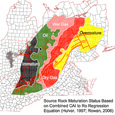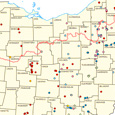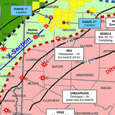Using Natural-Gas as a Motor Fuel is Complicated
Wednesday, March 27, 2013

According to the Mansfield News Journal, natural-gas has an uphill climb to become a mainstream source of energy for motor vehicles, but it’s not the price that is prohibitive, it’s building the infrastructure and writing the policy to support such a change.
Prices are a problem, kind of
One issue that’s slowing development in the Utica and Marcellus shales is the low price of natural-gas. Though natural-gas prices have crept up recently, due to a longer-than-usual winter, it’s still historically low.
These low prices are due to a glut of natural-gas in the market and to fix it, companies are trying to find other ways to use the fuel. One option is using natural-gas in cars and trucks.
Natural-gas powered vehicles have their challenges, including the availability of fueling stations.
Even if natural-gas fueling stations were common in the state, physics makes natural-gas cars and trucks difficult.
Read it:
“Jimmy Stewart, a former state senator who now is the president of the Ohio Gas Association, said there is a future for natural gas as a vehicle fuel, but it “will never completely replace diesel or gasoline.”
Stewart, who drives a Honda Civic that runs on natural gas, said physics is the challenge. The methane that fuels his car is in a gaseous form and requires a lot more space for the tank, which he said takes up more than half his trunk.”
Liquified natural gas may be the answer to the space problem, but LGNs come with difficulties of their own.
Read the whole story at Mansfieldnewsjournal.com.
» Via: The Mansfield News Journal › Methane has an uphill route to become a mainstream motor vehicle fuel





STOP BUYING OIL FROM OPEC. We cannot bring peace to the Middle East. We cannot force Afghanistan to be a democracy. Let us do something we can do. Stop buying oil from OPEC. We can do it now. Compressed natural gas (CNG) cars. Iran does it. So can we.
We still import 4 million barrels ($300 million) per day from OPEC. But now, we have the capability to stop all oil imports from OPEC within 60 months. We have low cost natural gas and low cost technology for converting cars to operate on CNG. This program would convert 65 million vehicles (23% of our fleet) to (CNG). Cost $98 billion. The other part of the program is to build 10,000 CNG refueling stations. Cost $20 billion. Total $118 billion. All the costs will be money spent on U.S. labor and material and financed by loans that would be repaid form the $80 billion per year fuel savings.
The program can start immediately by presidential order to convert the 600,000 federal non-military vehicles to CNG. Theses are shovel/wrench ready projects. Total cost: less than $5 billion.
This CNG program is not like the Manhattan Project that involved large technical uncertainties and risk. CNG technology is commercially available in the United States. Iran now has 2.9 million vehicles (23% of its fleet) operating on CNG.
The collateral benefits are manifold: cost savings; reduction in trade deficit; employment for 100,000 Americans; reduced CO2 emissions; low technical, commercial and environmental risks; progress that can be accurately measured; plus no political party would find it objectionable.